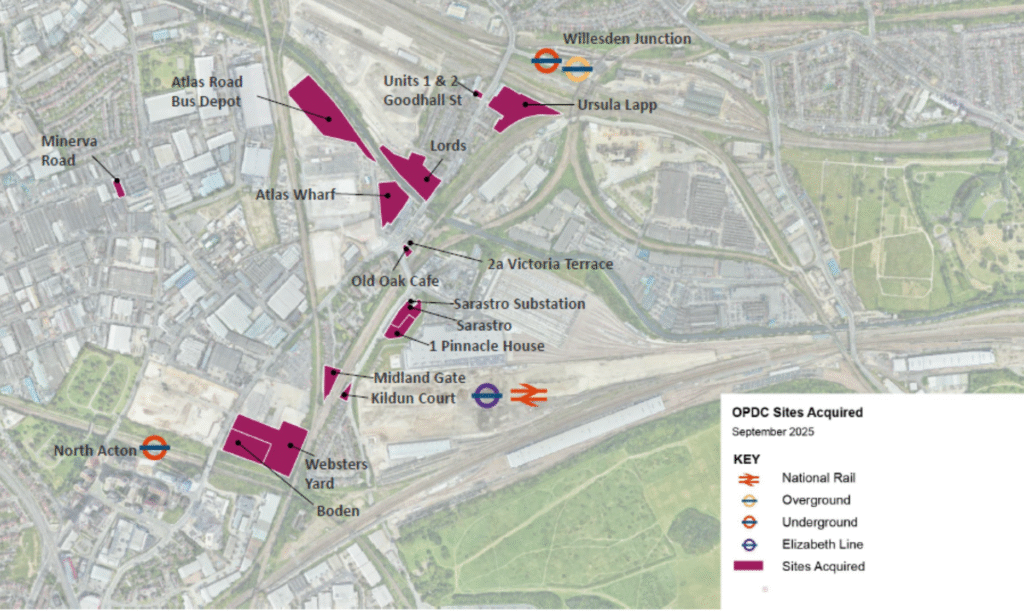OPDC has prepared a Compulsory Purchase Order covering 31 hectares of land at Old Oak West. Many of the properties and sites involved have been acquired by OPDC by agreement with owners during 2o24 and 2025. But OPDC see a CPO process as necessary to demonstrate that they have control of remaining sites (some 10% of the area) as part of their efforts to secure a ‘Master Development Partner’.
The development partner (or possibly partners) would enter into a joint venture or development agreement with OPDC, to develop individual sites with schemes in line with the Illustrative Masterplan that OPDC has been working on with its team of consultants led by architects/planners Gort Scott.

The ‘CPO Order’ was ‘made’ (meaning adopted) by OPDC on September 12th, Full details are available from the OPDC website at this link Old Oak Land Assembly Update. Objections have to be submitted the MHCLG Planning Decisions Unit by midnight October 8th (and can be emailed to pcu@communities.gov.uk). All our members have been alerted to this deadline.
Meetings of OONF and GUA members at our monthly Zoom sessions have discussed the CPO proposals. For several reasons, we think that the timing is wrong and that CPO powers should not be used by OPDC until the outcome of the HS2 ‘reset’ is known, sometime in 2026.
We don’t agree with OPDC’s insistence on proceeding ‘at pace’ with its Masterplan and partnering with a master developer. Their masterplan varies from the 2022 adopted Local Plan, shifting the proposed ‘major town centre’ from Atlas Wharf/Channel Gate to Acton Wells. The development sites near the Grand Union Canal now owned by OPDC are seen as the ‘first phase’ of housing development, with around 1,500 new homes.
Our fear is that these sites will be built out as very high density car-free blocks, comparable to Oaklands Rise. Planning consents will be granted on the assumption that Old Oak Common station will improve the existing low levels of access to public transport. But this will not be until 10-15 years hence and might not even happen if the HS2 reset proves to be unviable or unaffordable compared with other high priority UK infrastructure projects.
Our detailed objection to the CPO Order is below. Several property owners are thought to have objected also. If agreement is not reached with these parties, a Public Inquiry on the CPO will take place – possibly in Spring 2026.
As part of our objection we have referred to the proposals worked by OONF along with the Grand Union Alliance, Harlesden Neighbourhood Forum, and StQW Neighbourhood Forum in North Kensington. These were for medium density housing at the Atlas Road/Channel Gate triangle with a 10-15 year lifespan – so that the impact of HS2 and Old Oak Common station could be tested in real life.
These proposals were presented to a session of OPDC’s Planning Committee on September 8th 2021, but dismissed out of hand. Our related application to OPDC to extend the boundary of the Old Oak neighbourhood area was also ‘refused’. Given current efforts by the GLA to deliver modular housing on available sites to ease the homelessness crisis, we think that our 2021 suggestions merit another look. The presentation is below.

